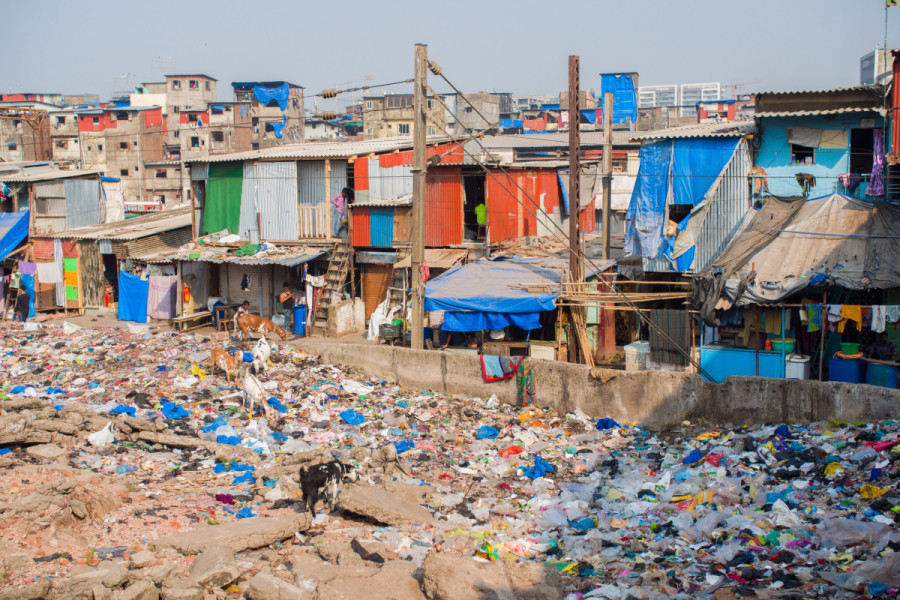SARS-CoV-2, the causative agent of Covid-19 was first declared as a pandemic in 2019. Since then, its devastating consequences have been observed worldwide, including in Nepal, causing hundreds of thousands of deaths and leaving many more people living with post-COVID syndrome. To prevent infection, people were advised to practice hand washing, wear masks and maintain physical distance during the outbreaks. However, although some individuals living in the slum area near our hospital in Teku were found to be infected with Covid-19, no outbreak was observed. It immediately drew my attention, as maintaining physical distance, wearing masks regularly, and frequent hand washing are not feasible for slum dwellers, who are often compelled to live in small, crowded spaces where the virus could easily spread through close contact (by coughing). This raises important questions: Did Covid-19 really skip the slums? And if not, why was the virus not as severe compared to non-slum areas?
In April 2020, BBC News reported that a 56-year-old man living in a slum area of Mumbai developed a fever and severe cough and was later diagnosed with Covid-19. It was feared that the virus could spread rapidly within the community, potentially overwhelming hospitals and leading to higher fatalities among slum dwellers. Contrary to this assumption, studies found that although more than half of slum residents tested positive for Covid-19 antibodies, the majority experienced no or mild symptoms. This has led to speculation that factors such as social behaviour or underlying physiological differences, or herd immunity, may have played a role.
Nevertheless, the exact reason for this phenomenon remains unclear. In fact, it is important to understand why the infection was not severe in the slums. Some scientists believe that this may be due to underreporting or weak surveillance systems that failed to capture the true death rate. However, if the people had been severely ill, they would likely have sought hospital care, making such cases publicly known and traceable to their communities. For example, although some individuals in the Teku slum area were known to have been infected with Covid-19, any outbreak would likely have become publicly known.
There is still an ongoing debate about the wide range of disease outcomes following virus exposure. One possible explanation is previous exposure to other coronavirus species, which may provide cross-reactive protection. SARS-CoV-2 belongs to the genus Betacoronavirus, which also includes HCoV-HKU-1, HCoV-OC43 and Middle East Respiratory Syndrome (MERS) viruses. Other species in this genus, such as HCoV-HKU-1 and HCoV-OC43, generally cause a common cold in humans, especially in children. Several genetic studies have shown that previous exposure to any of these coronaviruses may confer some protection against Covid-19. Human coronaviruses are responsible for nearly 15-30 percent of all common cold cases, making them the second most common cause after rhinoviruses. A study conducted in rural areas of Nepal found that 8 percent of infants tested positive for human coronaviruses, mainly HCoV-OC43 and HCoV-HKU-1 species. It shows that human coronaviruses may be more common in slum areas, where living conditions and hygiene are poorly maintained.
Another possible explanation for Covid-19 sparing slum areas may be the prevalence of multiple infections circulating in these areas. Fever and diarrhoea, caused by various known or unknown pathogens, are commonly observed in every season. Co-infection or mixed infections occur when two or more pathogens, such as viruses, bacteria, protozoa or fungi, infect a host simultaneously or sequentially. In such cases, various interactions can occur, including interference, where one pathogen competes with another to suppress its replication.
Very recently, I observed co-infections of dengue virus and Scrub typhus (virus-bacteria co-infection) in several patients, where individuals developed symptoms of only one of the infections. However, there is limited information and little research on the potential interference between Covid-19 with other infections. Baseline data on existing infections in slum areas, along with information on Covid-19 outcomes, could help determine whether interactions between these pathogens result in interference or synergy (i.e., increased disease severity as shown in non-slum areas) in these communities. Covid-19 has been observed to cause severe illness in both older adults and young adults during different waves. This suggests that the phenomenon of interference or synergy among multiple circulating infections may play a role, rather than severity being solely linked to age or chronic diseases as previously thought. Studying these interactions could also be valuable for understanding other pathogenic infections and predicting potential outcomes, particularly during future pandemics.
To conclude, the anticipated widespread transmission and high mortality during the Covid-19 pandemic in slum areas, as feared in one of India’s largest slum areas as well as in Nepal, did not materialise, raising critical questions about the underlying mechanisms. Previous or multiple exposures to other coronavirus species and interference with other infections are possible explanations, but these remain unproven or lack sufficient evidence. To better evaluate this hypothesis, baseline studies on existing infections and the seroprevalence of other coronavirus species are needed. Covid- 19 will not be the last pandemic, and understanding the mechanisms behind its severity may help predict the impact of future pandemics on communities.

